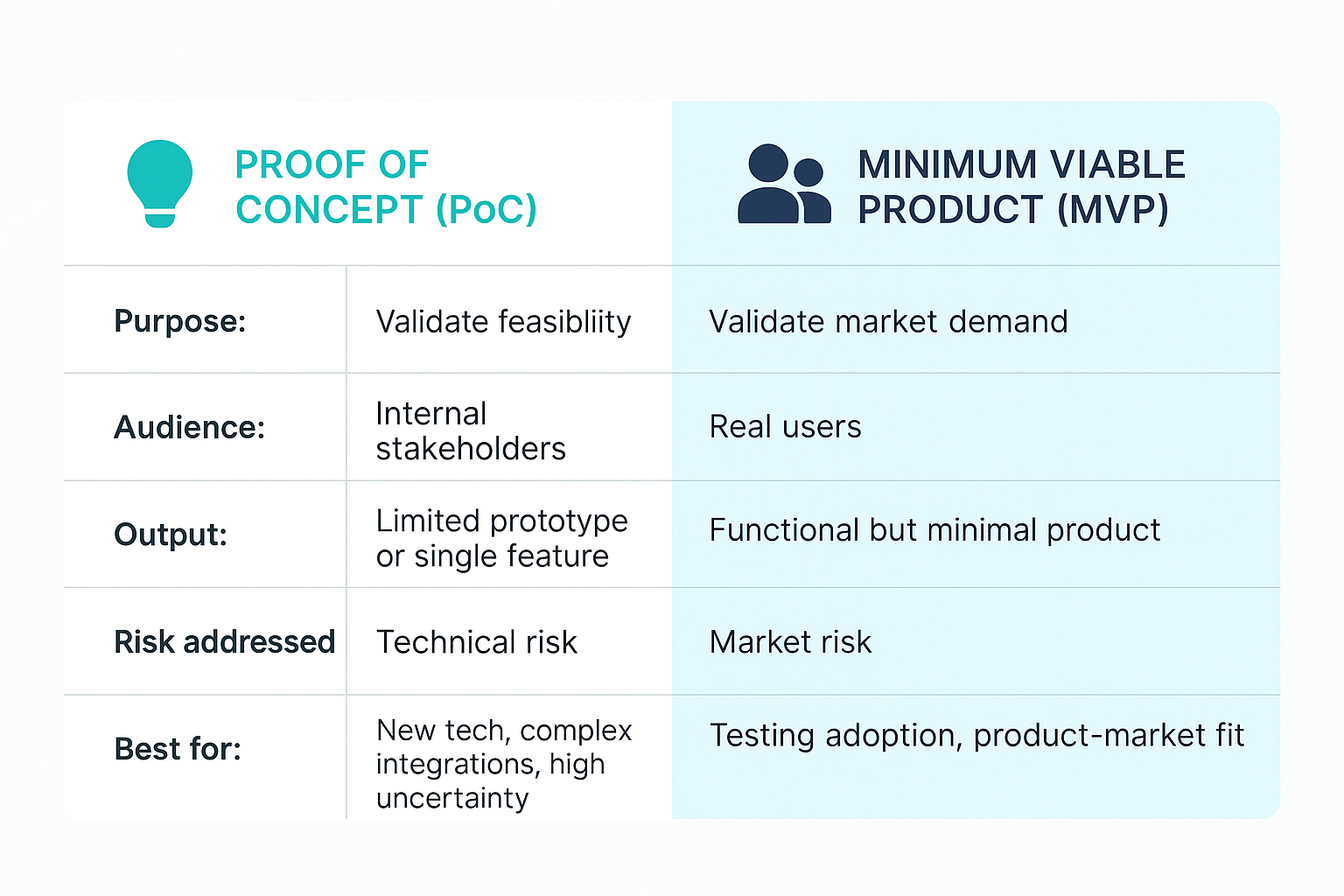The Case for PoCs Before MVPs
Lessons From Launching Clara
“We almost built the wrong product—twice.”
That’s how our journey with Clara, an AI-powered medical assistant, began. Before writing a single line of production code, we ran multiple Proofs of Concept (PoCs). The goal wasn’t to impress investors or launch fast, but to answer one question: Is this technically and operationally viable for doctors in real-world settings?
PoCs Are Not About Building, They’re About Learning
Steve Blank puts it clearly in The Startup Owner’s Manual: “A startup is a search for a repeatable and scalable business model.” That search starts with hypotheses, not polished products.
A PoC helps you test those hypotheses with the least possible commitment of time and resources. In Clara’s case, it meant confronting a messy reality: transcription AI wasn’t ready-made for multilingual, real-time clinical environments.
What We Tried (and Why We Walked Away)
Here’s the honest list of tools and approaches we tested in Clara’s early days:
✓ AssemblyAI (batch transcription) – Worked well for uploading audio, but not for live consultations.
✗ AWS Transcribe / Healthscribe – English-only and underperformed in Spanish.
✗ Azure Speech Service – Better than AWS, but still too many errors and hallucinations.
✓ Deepgram – Delivered accurate, consistent, real-time Spanish transcription, reducing hallucinations.
✗ Mobile App Prototype – Broke the doctor’s natural workflow; too disruptive in practice.
✗ Dify – Looked promising for AI orchestration, but constant version changes and added complexity slowed us down.
✓ AI SDK – Became our foundation. It gave us less complexity, less infrastructure to maintain, lower latency, and more control.
Each decision left scars. Each scar carried a lesson. And those lessons shaped Clara into a solution that actually works for clinicians.
The Real Value of PoC
The biggest takeaway? A PoC is a filter, not a milestone.
It filters out shiny but unfit technologies. It filters out workflows that look good in theory but collapse in practice. And most importantly, it filters out assumptions that could have doomed your MVP.
Skipping PoCs may feel like a shortcut, but it usually means you’re building blind. And nothing is more expensive for a startup than discovering—too late—that you’ve built the wrong thing.
Closing Thought
For us at Soluntech, Clara’s PoC journey reinforced one truth: failing fast in controlled experiments is the cheapest insurance against failing big in the market.
So, before you celebrate your MVP launch, ask yourself:
→ What are the assumptions I haven’t tested yet?
→ What’s the cheapest way to test them?
→ Do I really have enough signal to move forward?
Because the real work of a founder isn’t to build fast, it’s to learn faster.
PoC VS MPV — The difference in details
Ready to validate your idea before jumping into an MVP?
At Soluntech, we help founders and teams de-risk their journey with smart PoCs, rapid prototyping, and validation-first builds.
Let’s talk about how we can help you test, learn, and launch with confidence.


